15 Simple Tips for Getting Better Results from Your Juicer

Getting the most from your juicer doesn’t have to be complicated. Whether you’re new to juicing or looking to improve your current routine, small changes can make a big difference in taste and nutrition. Many people struggle with foam, low juice yield, or bitter flavors without knowing simple fixes. These practical tips will help improve skills to make your juice while making the whole process smoother and more enjoyable.
1. Freeze Your Citrus Fruits Before Juicing
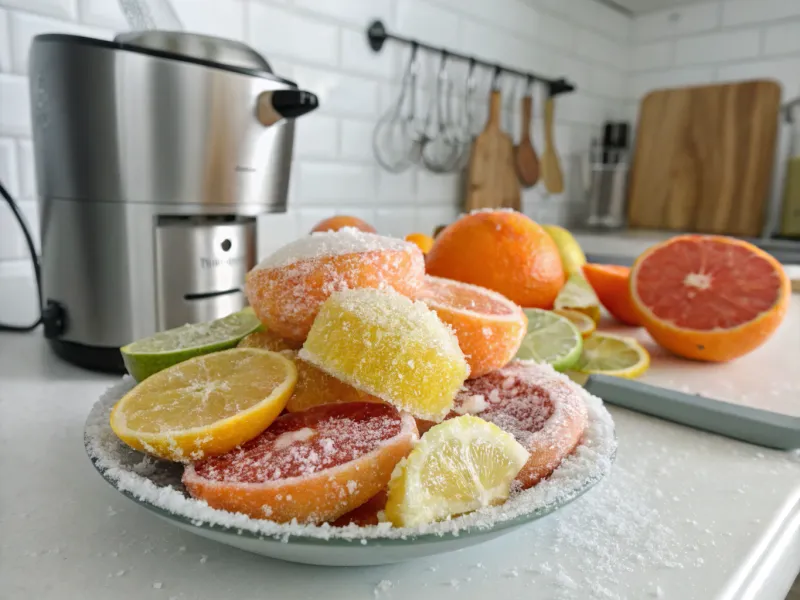
Freezing citrus fruits overnight offers a method to increase juice extraction. This technique involves placing oranges, lemons, and grapefruits in a freezer. The freezing process causes ice crystals to form within the fruit, disrupting its internal structure.Upon thawing at room temperature, the fruit’s texture softens, and juice is released more readily. This process can result in a notable increase in juice yield. Compared to fresh citrus, this method can yield up to 30% more liquid from the same quantity of fruit.
2. Add a Pinch of Salt to Reduce Foam
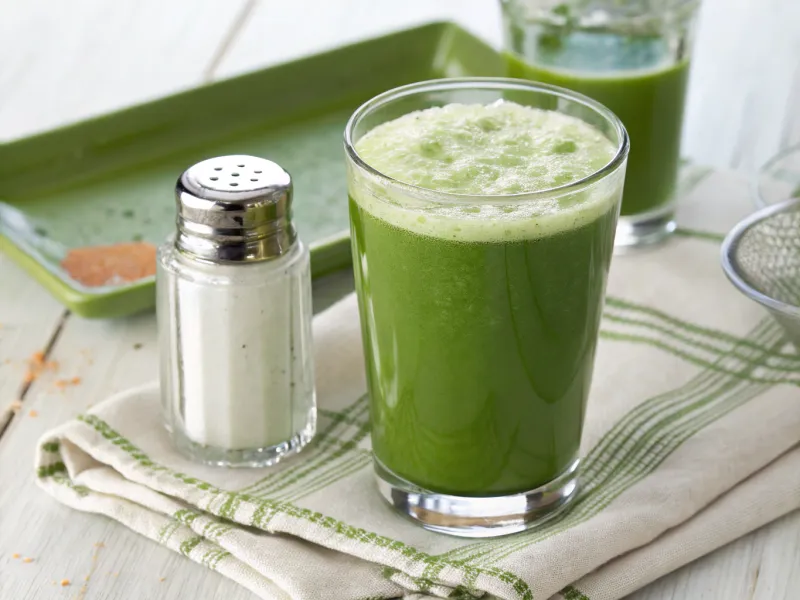
Fresh juice, though often considered a beverage, can be improved with a simple technique. Foam, which can appear on top of freshly extracted juice, can impact the flavor. A small amount of table salt, when added after juicing, can reduce the foam. Salt alters the liquid’s surface tension, leading to the foam’s breakdown. The salt’s presence is not detectable when used in small quantities.This method is especially beneficial for juices like apple, carrot, and green vegetable blends, which tend to generate more foam.
3. Juice Your Vegetables in Alphabetical Order
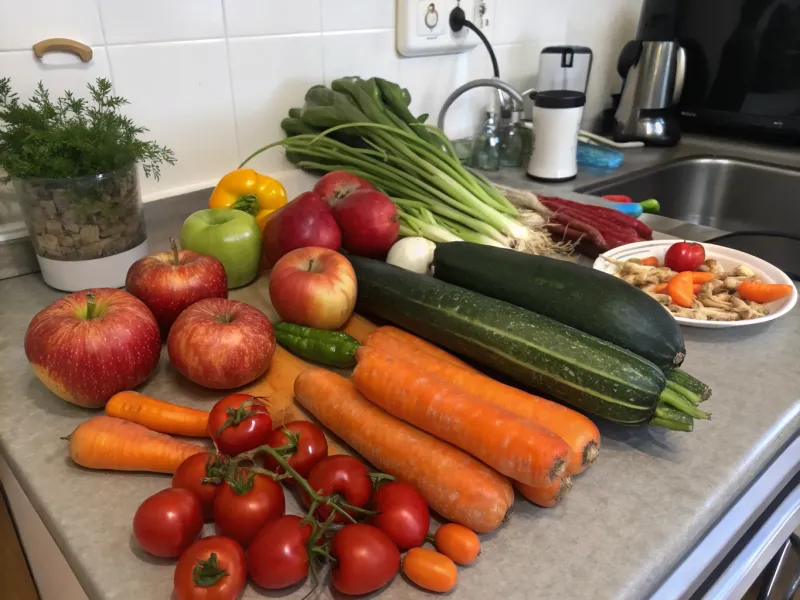
Juicing, starting with apples, then moving to beets, carrots, and so on, offers a structured method for ingredient selection. This systematic approach aids in remembering compatible combinations. Alphabetical organization encourages consideration of ingredient additions. This prevents haphazard mixing, which can lead to unusual flavor profiles. Individuals gain a deeper comprehension of vegetable pairings. Many people discover preferred combinations through this method. Additionally, it streamlines grocery shopping, as ingredients are considered alphabetically.
4. Clean Your Juicer with Uncooked Rice

Dry rice grains offer a solution for cleaning juicer mesh screens. To begin, introduce half a cup of dry rice and water into the juicer. Operate the juicer for 30 seconds. The rice acts to remove residue that standard rinsing may not address. This approach is effective in clearing small mesh openings where residue tends to accumulate. Following the rice treatment, discard the contents and rinse as usual. The juicer screen should appear cleaner, enhancing the quality of subsequent juicing.
5. Store Juice in Mason Jars Filled to the Brim
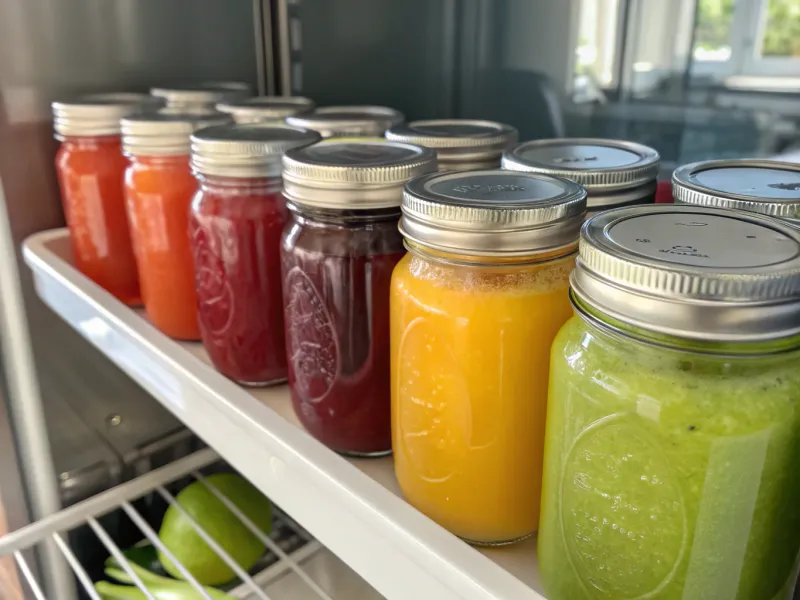
To maintain the freshness of freshly squeezed juice, minimizing air exposure is essential. Air accelerates nutrient degradation and the development of undesirable flavors. Mason jars provide a suitable storage solution. Their design allows for complete filling, reducing air pockets. The optimal method involves filling the jar until a slight overflow occurs when the lid is secured. This process expels air, mitigating oxidation and nutrient depletion. Juice preserved using this method can maintain its fresh taste for approximately three days when refrigerated. This is an improvement over storage in containers with air gaps, which typically allows for freshness for only one day.
6. Juice Ginger by Freezing It First

Freezing ginger before juicing offers a practical method to improve juice yield. The process modifies the ginger’s structure, facilitating better extraction. Freezing ginger overnight alters its composition, leading to a softer, less fibrous texture upon thawing. This alteration assists juicers in processing the root more effectively. As a result, users obtain more juice from the same ginger quantity. Furthermore, frozen ginger simplifies the peeling process. The skin separates easily, simplifying preparation compared to peeling fresh ginger.
7. Mix Cucumber Juice with Other Ingredients
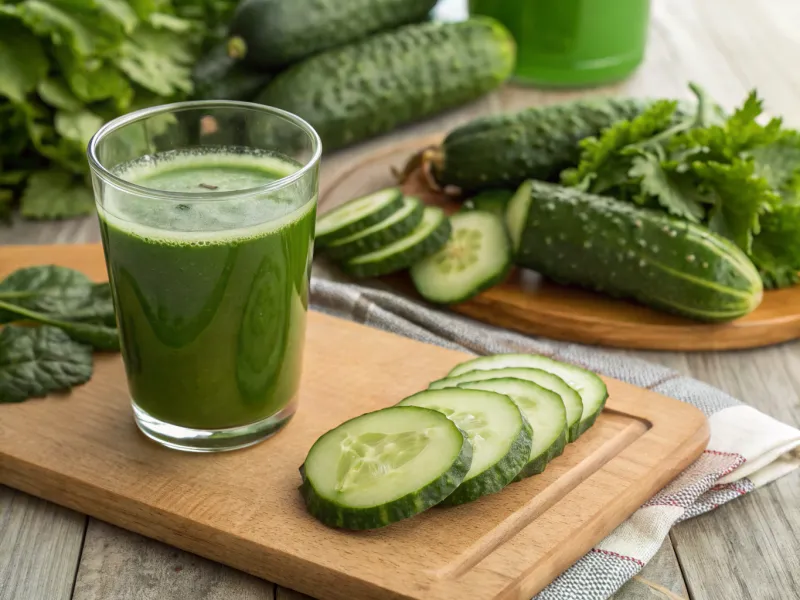
Cucumber juice serves as a natural flavor balancer, improving the drinkability of robust vegetable juices. Its gentle, refreshing flavor complements other ingredients without dominating them, while also adding volume. Cucumbers have a high water content, which boosts juice yield economically. A single large cucumber can almost double the liquid extracted from other vegetables. Adding cucumber to spinach, kale, or other intense green juice combinations can mellow strong flavors. This process preserves the nutritional benefits.
8. Run Your Juicer Backwards for Better Cleaning
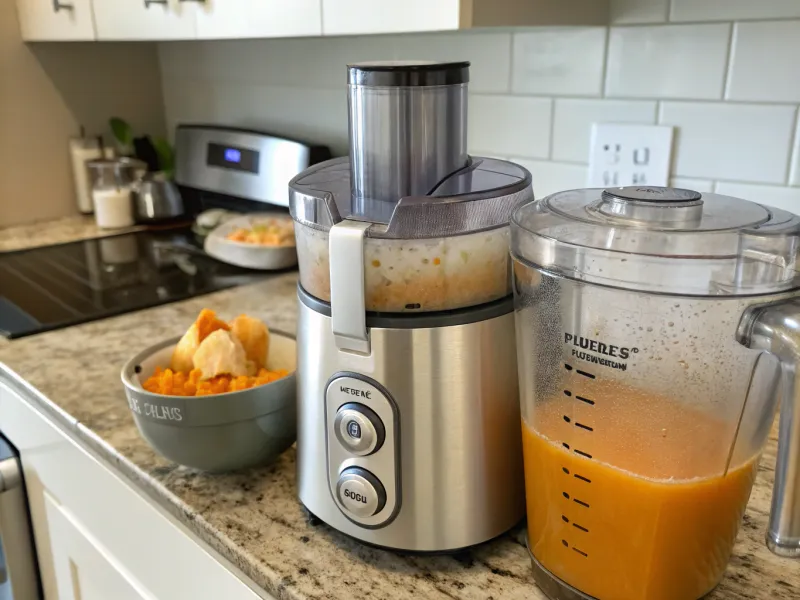
Many users are unaware that their juicers often possess a reverse function. This feature aids in clearing pulp accumulation within the machine’s internal components. Consult the user manual to locate the reverse switch or button, which alters the motor’s direction. Operating the juicer in reverse for approximately 10-15 seconds following regular usage can dislodge packed pulp. This practice prevents residue buildup, which may impact subsequent juicing and produce undesirable odors. The reverse function proves particularly effective after processing fibrous vegetables, such as celery, or firm fruits, such as pineapple, which tend to leave behind more residue.
9. Add Ice Cubes to Your Produce Before Juicing
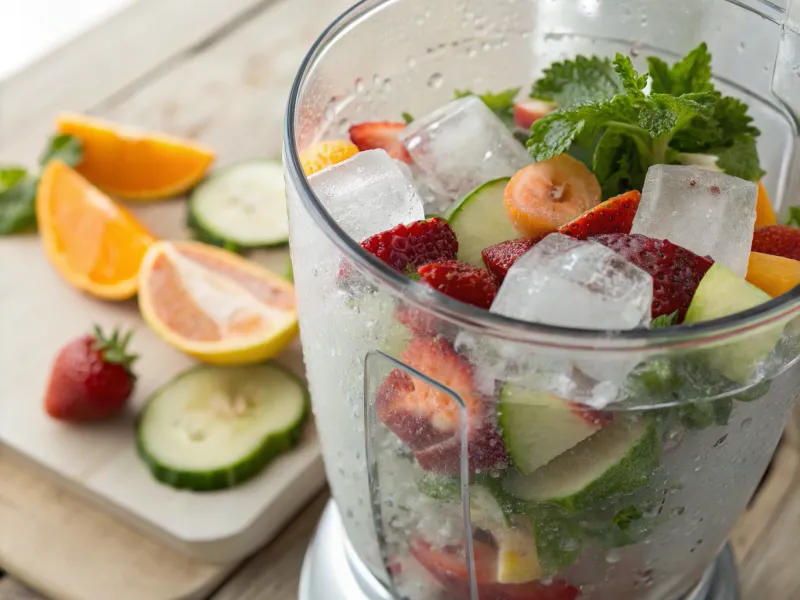
Adding ice cubes while juicing assists in maintaining the coolness of the produce. The heat generated by the motor and friction can affect the juice’s flavor and nutritional value. Cold juice offers a fresher and more refreshing taste compared to juice at room temperature. The ice aids in processing softer fruits by adding firmness and structure. The majority of the ice is directed to the pulp container, preventing dilution of the juice. The outcome is cold, fresh-tasting juice.
10. Juice Beets Last to Avoid Staining
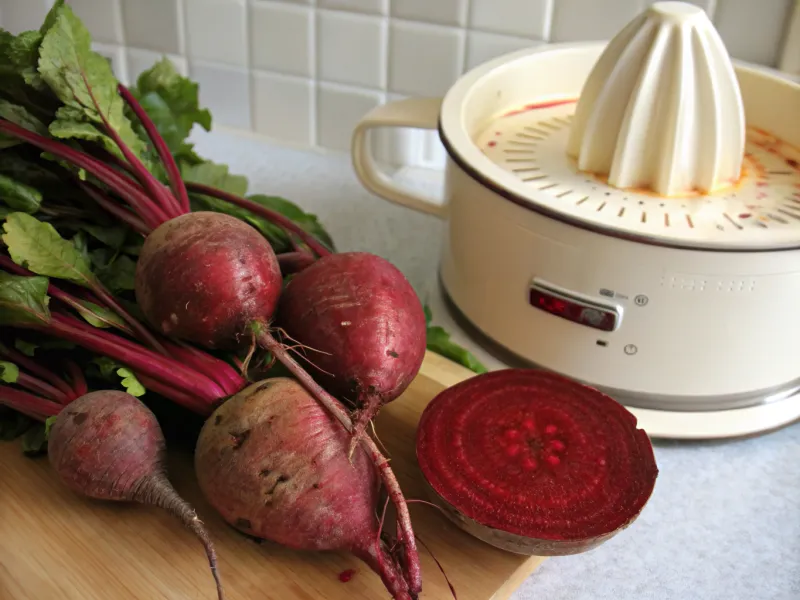
Beet juice presents a challenge in the juicing process. Its staining ability affects everything it contacts, especially lighter colored juices. To prevent color transfer, it’s recommended to juice beets last. The intense red pigment can easily tint other juices like apple or carrot. Once this occurs, the color and earthy flavor are permanent. If preparing multiple juices, thoroughly clean the juicer before introducing beets. Otherwise, expect a reddish hue and earthy flavor in subsequent juices.
11. Warm Your Citrus Fruits in the Microwave
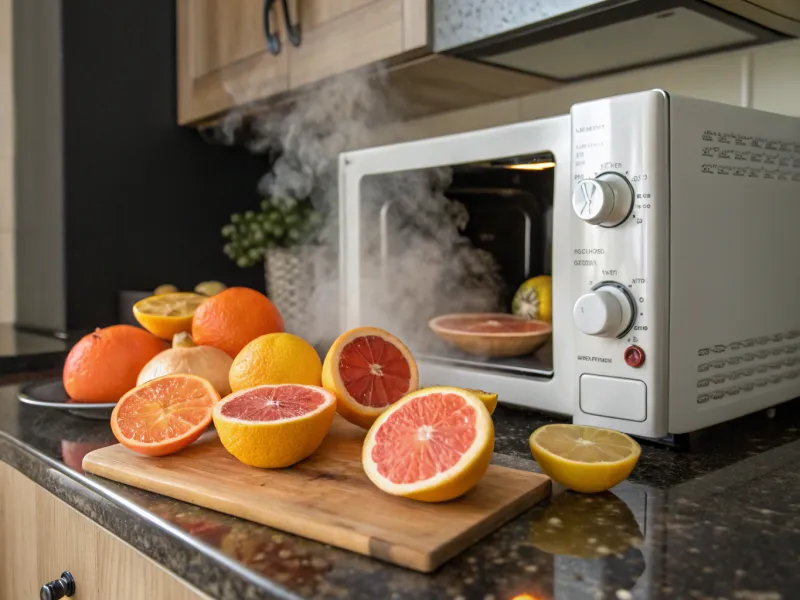
Warming citrus fruits briefly before juicing can increase liquid output. Microwaving the fruit for 15-20 seconds expands the juice and softens the fruit. After warming, rolling the fruit on a counter while applying pressure helps to break down the internal segments. This method is particularly useful for limes and lemons, which may yield less juice than oranges. Warm citrus fruits can produce up to 40% more juice compared to cold fruit.
12. Save Your Pulp for Making Vegetable Broth
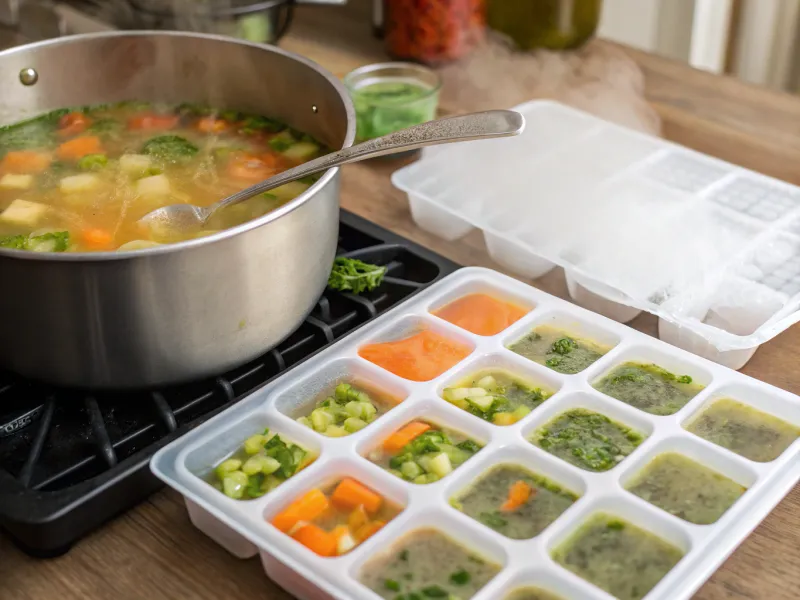
Vegetable juicing produces pulp that, rather than being discarded, can be repurposed into a flavorful soup base. This method leverages the residual flavors and nutrients present in the pulp. The process involves simmering the pulp with water for a duration of 30-45 minutes. This allows for the extraction of the remaining beneficial components. Following the simmering, the liquid is strained, yielding a rich vegetable broth. This technique is particularly effective when utilizing a combination of carrot, celery, and onion pulp. The resulting broth is suitable for freezing. It can be portioned into ice cube trays, providing convenient flavor additions for various culinary applications, such as soups, stews, and rice dishes. This method offers an economical way to enhance the taste of meals.
13. Alternate Between Hard and Soft Produce

To optimize juicer functionality, a strategic approach to produce selection is key. Beginning with firm vegetables such as carrots, followed by soft fruits like grapes, enhances the process. The initial hard produce assists in moving the softer items through the juicer. This method prevents potential blockages or pulp accumulation, which can impede juice extraction. Introducing firm items after soft ones clears the system, ensuring a consistent juice flow. This alternating sequence also helps prevent clogs in the pulp ejection system. Such clogs can strain the juicer, potentially leading to overheating during extended use.
14. Add Lemon Juice to Prevent Oxidation

Freshly made juice begins to degrade shortly after preparation. Exposure to air initiates oxidation, leading to color changes and nutrient degradation. Adding a small amount of fresh lemon juice, about one tablespoon per cup, can help mitigate these effects. The acidity in lemon acts as a natural preservative, slowing down the chemical processes that cause nutrient loss. This technique is particularly useful for juices like apple juice and other lighter-colored varieties, which tend to brown rapidly. The addition of lemon is subtle, yet it has a substantial impact on the juice’s freshness and appeal. Juices treated in this way will retain their appearance and flavor for a longer duration.
15. Juice Leafy Greens Rolled into Tight Bundles

To optimize juice extraction from spinach, kale, and similar leafy greens, preparing the leaves is key. Instead of feeding loose leaves into the juicer, it’s better to roll them into compact bundles. This method ensures the juicer can grip and process the greens more effectively. Rolling the leaves into a tight package, like a cigar, helps the machine work efficiently. This approach can lead to a higher yield of juice from the same amount of greens.
